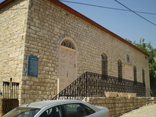In I got It!
The First of the Aliyos
The students of the Vilna Gaon was the first group of the Aliyah movement.
Up until the present day, Zionist historians still credit the immigration of the ‘Chovevei Tzion’ movement with being the first of the waves of immigration in modern times. This is despite the fact that their aliya to Eretz Yisroel took place only at the end of the 19th century ce. In fact, it would be far more correct to attribute this ‘merit’ to the aliyos of chassidim and perushim (talmidim of the Vilna Gaon), almost a hundred years previously.
Talmidim of the Gaon started to arrive in the Holy Land in the year 5568 (1808ce) and they formed, along with the chassidic immigrants of that period, the basis of the first new settlement of Jews in Eretz Yisroel in modern times. They established the first Jewish farming communities, Gai Oni near Tzfas (today called Rosh Pina) and Petach Tikva.
The influx of these religious immigrants was fueled by their great longing to live in the Holy Land, despite the fact that at that time, Eretz Yisroel lay in ruins. In general, they preferred to settle in one of the four holy cities; Yerushalayim, Chevron, Tzfas or Tiveria. Because of this, the later secular immigrants called the religious aliya the ‘Yishuv haYoshon’ or ‘old settlement’, whereas they referred to themselves as ‘the first of the new immigrants’.
This argument as to who exactly constituted the ‘first aliya’ is an old one, with the secular arguing against the recognition of the chassidishe aliya as the first of modern times. This would be anathema to them; in their eyes, the chassidishe aliya amounts to nothing, since the chassidim did not contribute to the economic rebuilding and prosperity of the country, nor did they possess any of the secular pioneering spirit.
It is left to us then, to restore the ‘yishuv hayoshon’ to its rightful place, and give it its accolade as ‘the first of the aliyos’.







